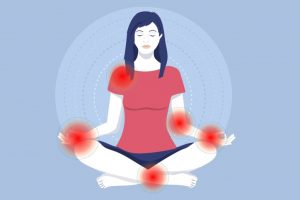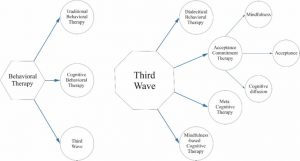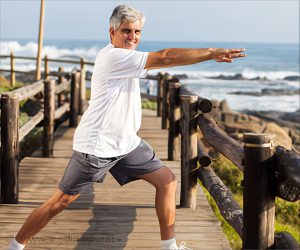Relieve Pain with Brief Mindfulness-Based Interventions
By John M. de Castro, Ph.D.
“The mechanisms behind how mindfulness reduces pain . . . continue to include mindfulness meditation’s ability to provide pain relief by cultivating the ability to parse between the objective sensory dimension of pain, and the more subjective judgement that we attach to the pain that constructs the way we experience it.” – Jennifer Wolkin
We all have to deal with pain. It’s inevitable, but hopefully it’s mild and short lived. For a wide swath of humanity, however, pain is a constant in their lives. At least 100 million adult Americans have chronic pain conditions. The most common treatment for chronic pain is drugs. These include over-the-counter analgesics and opioids. But opioids are dangerous and highly addictive. Prescription opioid overdoses kill more than 14,000 people annually. So, there is a great need to find safe and effective ways to lower the psychological distress and improve the individual’s ability to cope with the pain.
There is an accumulating volume of research findings that demonstrate that mindfulness practices, in general, are effective in treating pain. What is not known is the most effective approach to teaching mindfulness for the treatment of both acute and chronic pain. There are very brief mindfulness trainings that are practical methods, requiring minimal time and effort, for inducing mindfulness. The question is are they effective for reducing pain.
In today’s Research News article “Brief Mindfulness-Based Interventions for Acute and Chronic Pain: A Systematic Review.” (See summary below or view the full text of the study at: https://www.ncbi.nlm.nih.gov/pmc/articles/PMC6437625/ ) McClintock and colleagues review and summarize the published research literature on the effective of Brief Mindfulness-Based Interventions (BMBI), with total contact time of less than 1.5 hours, for the treatment of pain. They identified 20 published research studies.
They report that 11 of 19 quantitative studies reported that Brief Mindfulness-Based Interventions (BMBI) resulted in significant reductions in pain intensity or unpleasantness. But BMBIs less than 5 minutes or delivered by audio recording did not produce consistent results. On the other hand, when the BMBI was longer than 5 minutes and were delivered through direct participant-provider contact, there was a consistent significant reduction in pain intensity or unpleasantness This was true for both clinical and non-clinical participants.
It should be kept in mind that these findings relate to very brief mindfulness interventions. Longer interventions consistently produce reductions in pain regardless of whether the intervention is delivered in person or over the internet. But the present findings are interesting and potentially significant because of the brevity of the interventions. These Brief Mindfulness-Based Interventions (BMBI) can be provided quickly and conveniently without a long-term commitment by the patient or the provider. This makes them inexpensive and acceptable to a wide range of patients. This allows for widespread use of mindfulness to relieve the suffering of pain patients.
So, relieve pain with brief mindfulness-based interventions.
“the goal of those [mindfulness] practices is typically not to remove pain entirely, but to change your relationship with it so that you are able to experience relief and healing in the middle of uncomfortable physical sensations.” – Andrea Uptmor
CMCS – Center for Mindfulness and Contemplative Studies
This and other Contemplative Studies posts are also available on Google+ https://plus.google.com/106784388191201299496/posts and on Twitter @MindfulResearch
Study Summary
Andrew S. McClintock, Shannon M. McCarrick, Eric L. Garland, Fadel Zeidan, Aleksandra E. Zgierska. Brief Mindfulness-Based Interventions for Acute and Chronic Pain: A Systematic Review. J Altern Complement Med. 2019 Mar 1; 25(3): 265–278. Published online 2019 Mar 9. doi: 10.1089/acm.2018.0351
Abstract
Objectives: Nonpharmacologic approaches have been characterized as the preferred means to treat chronic noncancer pain by the Centers for Disease Control and Prevention. There is evidence that mindfulness-based interventions (MBIs) are effective for pain management, yet the typical MBI may not be feasible across many clinical settings due to resource and time constraints. Brief MBIs (BMBIs) could prove to be more feasible and pragmatic for safe treatment of pain. The aim of the present article is to systematically review evidence of BMBI’s effects on acute and chronic pain outcomes in humans.
Methods: A literature search was conducted using PubMed, PsycINFO, and Google Scholar and by examining the references of retrieved articles. Articles written in English, published up to August 16, 2017, and reporting on the effects of a BMBI (i.e., total contact time <1.5 h, with mindfulness as the primary therapeutic technique) on a pain-related outcome (i.e., pain outcome, pain affect, pain-related function/quality of life, or medication-related outcome) were eligible for inclusion. Two authors independently extracted the data and assessed risk of bias.
Results: Twenty studies meeting eligibility criteria were identified. Studies used qualitative (n = 1), within-group (n = 3), or randomized controlled trial (n = 16) designs and were conducted with clinical (n = 6) or nonclinical (i.e., experimentally-induced pain; n = 14) samples. Of the 25 BMBIs tested across the 20 studies, 13 were delivered with audio/video recording only, and 12 were delivered by a provider (participant–provider contact ranged from 3 to 80 min). Existing evidence was limited and inconclusive overall. Nevertheless, BMBIs delivered in a particular format—by a provider and lasting more than 5 min—showed some promise in the management of acute pain.
Conclusions: More rigorous large scale studies conducted with pain populations are needed before unequivocally recommending BMBI as a first-line treatment for acute or chronic pain.
https://www.ncbi.nlm.nih.gov/pmc/articles/PMC6437625/









